In recent years, dermatology has seen a remarkable shift in the treatment of common skin issues like acne, rosacea, and pigmentation. Oral antibiotics have emerged as a promising solution, effectively managing these concerns from within. They work by targeting acne-causing bacteria, reducing inflammation, and controlling excess oil production, offering clear benefits for those struggling with acne. Additionally, they help alleviate redness and swelling in rosacea patients and regulate melanin production to address pigmentation concerns. While effective, their overuse poses risks of antibiotic resistance, emphasizing the importance of judicious use under dermatologist guidance.
With advancements in oral antibiotic therapy, dermatologists can now tailor treatment plans to individual needs, ensuring optimal results with minimal side effects. By incorporating oral antibiotics into a comprehensive skincare regimen, patients can achieve clearer, healthier-looking skin and regain their confidence. Consulting with a dermatologist is crucial to navigating the benefits and risks of oral antibiotic therapy, allowing individuals to make informed decisions about their skincare journey. With proper guidance and commitment, oral antibiotics offer hope for those seeking transformative results in their skin
Understanding Oral Antibiotics in Dermatology

Oral antibiotics serve as a cornerstone in dermatological treatment, addressing various skin conditions through systemic action. Below, we delve into their mechanisms of action, medical indications, and common oral antibiotics used in dermatology:
|
Mechanism of Action |
Indications |
Common Oral Antibiotics |
|
Antibacterial properties: Targeting acne-causing bacteria such as Propionibacterium acnes |
Acne vulgaris |
Tetracycline Doxycycline Minocycline |
|
Anti-inflammatory effects: Reducing inflammation and erythema associated with rosacea |
Rosacea |
Tetracycline Doxycycline Minocycline |
|
Regulation of melanin production: Addressing hyperpigmentation concerns by inhibiting melanin synthesis |
Hyperpigmentation |
Tetracycline Doxycycline Minocycline |
Antibiotics in Dermatology:
-
Tetracycline: Exhibits broad-spectrum antibacterial activity and anti-inflammatory properties, making it effective for treating acne and rosacea. However, it may cause gastrointestinal disturbances and photosensitivity.
-
Doxycycline: A derivative of tetracycline, known for its efficacy in treating acne and rosacea. It is well-tolerated but may cause photosensitivity and gastrointestinal upset.
-
Minocycline: Another tetracycline derivative with potent antibacterial activity against Propionibacterium acnes. It is often used for moderate to severe acne but may lead to side effects like dizziness and discoloration of teeth.
The Evolution of Oral Antibiotic Therapy

Over the years, oral antibiotic therapy has undergone a remarkable evolution in dermatology, reflecting advancements in medical science and technology. This evolution can be observed through several key milestones:
-
Discovery of Antibiotics: The discovery of antibiotics in the mid-20th century revolutionized medical practice, offering effective treatment options for bacterial infections, including those affecting the skin. This discovery laid the foundation for the development of oral antibiotic therapy in dermatology.
-
Early Use in Dermatological Conditions: In the early days of dermatology, oral antibiotics were primarily used to treat severe bacterial infections of the skin, such as cellulitis and abscesses. These medications provided a valuable tool for combating bacterial pathogens and preventing complications associated with these infections.
-
Expansion to Chronic Skin Conditions: As our understanding of dermatological conditions grew, so did the application of oral antibiotics. Dermatologists began to explore the use of these medications in chronic skin conditions, such as acne and rosacea, where bacterial overgrowth and inflammation play key roles in disease pathogenesis.
-
Refinement of Treatment Protocols: With advancements in pharmacology and drug development, dermatologists gained access to a wider range of oral antibiotics with improved efficacy and safety profiles. This led to the development of standardized treatment protocols that optimize therapeutic outcomes while minimizing the risk of adverse effects.
-
Integration with Multimodal Therapy: Today, oral antibiotics are an integral component of multimodal therapy for various dermatological conditions. They are often used in combination with topical treatments, skincare regimens, and procedural interventions to address the diverse needs of patients and achieve optimal clinical outcomes.
Efficacy and Safety of Oral Antibiotics in Acne Treatment
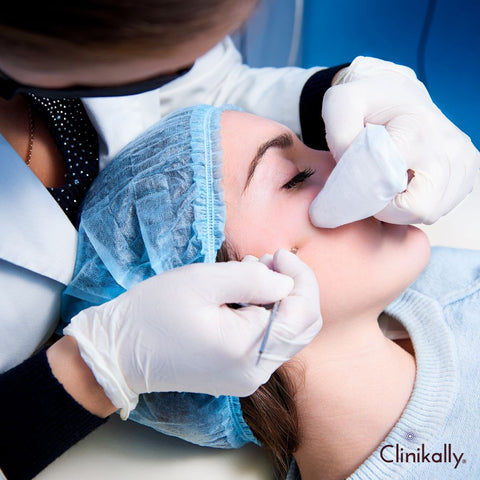
Acne, a common skin condition affecting millions worldwide, often requires medical intervention for effective management. Among the various treatment options, oral antibiotics play a significant role in combating acne-causing bacteria and reducing inflammation. Here's a closer look at their efficacy and safety:
-
Targeting Bacterial Overgrowth: Oral antibiotics like tetracycline, doxycycline, and minocycline work by inhibiting the growth of Propionibacterium acnes, the bacteria responsible for acne development. By reducing bacterial proliferation, these antibiotics help alleviate acne symptoms and prevent new breakouts.
-
Anti-inflammatory Effects: In addition to their antimicrobial properties, oral antibiotics possess anti-inflammatory effects. They help calm inflamed skin and reduce the redness and swelling associated with acne lesions, promoting faster healing and improved skin appearance.
-
Treatment Duration and Regimens: Oral antibiotics are typically prescribed for a finite period, often ranging from a few weeks to several months, depending on the severity of the acne and individual response to treatment. Dermatologists may recommend various dosing regimens, including once or twice daily administration, to optimize therapeutic outcomes.
-
Potential Side Effects: While oral antibiotics are generally well-tolerated, they can cause side effects in some individuals. Common adverse reactions may include gastrointestinal disturbances (such as nausea, vomiting, or diarrhea), photosensitivity (increased sensitivity to sunlight), and vaginal yeast infections in females. Rare but serious side effects, such as allergic reactions or antibiotic resistance, necessitate prompt medical attention.
-
Risk of Antibiotic Resistance: Prolonged or indiscriminate use of oral antibiotics can contribute to the development of antibiotic-resistant bacteria, diminishing the efficacy of these medications over time. To mitigate this risk, healthcare providers emphasize prudent antibiotic prescribing practices and advocate for combination therapy and alternative treatment modalities when appropriate.
-
Individualized Treatment Approach: The decision to prescribe oral antibiotics for acne should be made on a case-by-case basis, taking into account factors such as acne severity, previous treatment response, potential side effects, and patient preferences. Dermatologists strive to tailor treatment regimens to each patient's unique needs, ensuring optimal efficacy and safety.
Oral antibiotics remain valuable components of acne treatment regimens due to their antimicrobial and anti-inflammatory properties. However, their use should be judiciously balanced with considerations for potential side effects and antibiotic resistance.
Managing Rosacea and Pigmentation with Oral Antibiotics
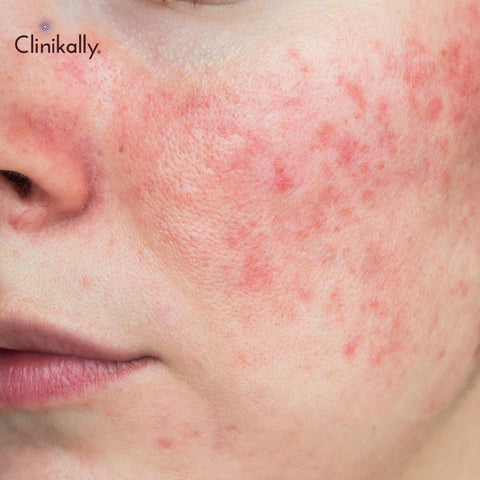
Managing rosacea and pigmentation disorders with oral antibiotics involves leveraging their dual benefits of anti-inflammatory and antimicrobial properties. By targeting underlying inflammation and regulating melanogenesis, oral antibiotics play a pivotal role in alleviating symptoms and restoring skin health in patients with these dermatological conditions.
-
Tackling Rosacea: Oral antibiotics like doxycycline and minocycline are often prescribed to manage rosacea, a chronic skin condition characterized by facial redness, visible blood vessels, and acne-like breakouts. These antibiotics help reduce inflammation and control bacterial overgrowth associated with rosacea flare-ups.
-
Targeting Pigmentation: In cases of post-inflammatory hyperpigmentation (PIH) caused by conditions like acne, oral antibiotics can play a role in reducing inflammation and preventing further skin discoloration. By addressing the underlying inflammation, antibiotics may aid in fading pigmented spots over time.
-
Combating Rosacea Subtypes: Different subtypes of rosacea may require varying approaches to treatment. Oral antibiotics are particularly effective for papulopustular rosacea, characterized by acne-like bumps and pus-filled lesions. They work by suppressing inflammation and controlling bacterial proliferation, helping to alleviate symptoms and prevent flare-ups.
-
Duration and Dosage: Treatment duration and dosage of oral antibiotics for rosacea and pigmentation management may vary depending on the severity of the condition and individual response. Dermatologists typically prescribe short-term courses to minimize the risk of antibiotic resistance and monitor patients closely for side effects.
-
Adjunctive Therapies: Oral antibiotics are often used in conjunction with topical treatments, skincare regimens, and lifestyle modifications to optimize results and minimize reliance on antibiotics alone. Sun protection, gentle skincare products, and avoiding triggers like spicy foods and alcohol can complement oral antibiotic therapy for rosacea management.
-
Consultation and Monitoring: Patients undergoing oral antibiotic treatment for rosacea and pigmentation should maintain regular follow-up appointments with their dermatologist to assess treatment efficacy, monitor for side effects, and make any necessary adjustments to their skincare regimen or medication dosage.
Understanding the Role and Challenges of Oral Antibiotics in Managing Acne Rosacea and Pigmentation
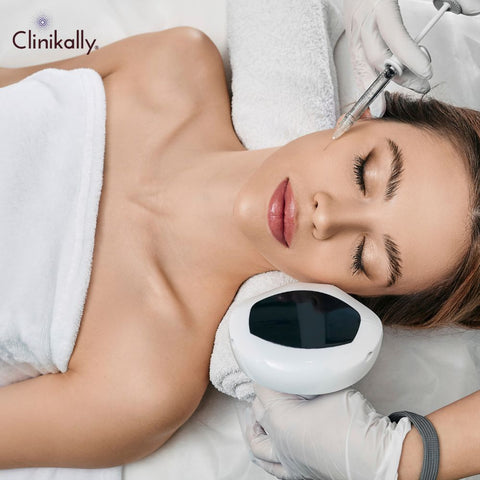
Acne rosacea and pigmentation disorders present significant challenges in dermatology due to their chronic nature and potential impact on patients' quality of life. Oral antibiotics have emerged as a cornerstone in their management, offering both antimicrobial and anti-inflammatory benefits. However, a deeper understanding of their role and associated challenges is essential for optimizing treatment outcomes.
Oral antibiotics have been fundamental in treating acne rosacea and pigmentation disorders due to their antimicrobial and anti-inflammatory properties.
-
Mechanisms of action: Antibiotics like tetracyclines and macrolides inhibit bacterial growth and reduce inflammation, thereby alleviating symptoms.
-
Efficacy: Clinical studies confirm the effectiveness of oral antibiotics in reducing inflammatory lesions, erythema, and pigmentation irregularities.
-
Clinical considerations: Prolonged use of antibiotics can lead to adverse effects such as gastrointestinal disturbances and the development of antibiotic resistance.
-
Challenges: Antibiotic resistance poses a significant challenge, necessitating a shift towards alternative therapies and antimicrobial stewardship.
-
Emerging issues: The impact of antibiotics on the skin and gut microbiota requires careful consideration for long-term management strategies.
Efficacy and Clinical Considerations:
Clinical studies have demonstrated the efficacy of oral antibiotics in reducing inflammatory lesions, erythema, and pigmentation irregularities.
However, their efficacy may vary among individuals, and prolonged use can lead to adverse effects such as gastrointestinal disturbances, photosensitivity, and the development of antibiotic resistance.
Clinicians must weigh the benefits of oral antibiotics against the potential risks, considering factors such as patient age, comorbidities, and previous antibiotic exposure.
Antibiotic resistance poses a significant challenge in the management of acne rosacea and pigmentation disorders, impacting both treatment efficacy and patient outcomes. Understanding the implications of antibiotic resistance is crucial for dermatologists in optimizing therapeutic strategies and promoting antimicrobial stewardship.
Emergence and Prevalence:
Overuse and misuse of antibiotics have led to the emergence of antibiotic-resistant strains, diminishing the effectiveness of traditional treatment options.
High prevalence rates of antibiotic-resistant bacteria, such as Propionibacterium acnes, have been reported in patients with acne rosacea and pigmentation disorders.
Antibiotic Resistance in Acne Rosacea and Pigmentation: Implications for Dermatological Practice
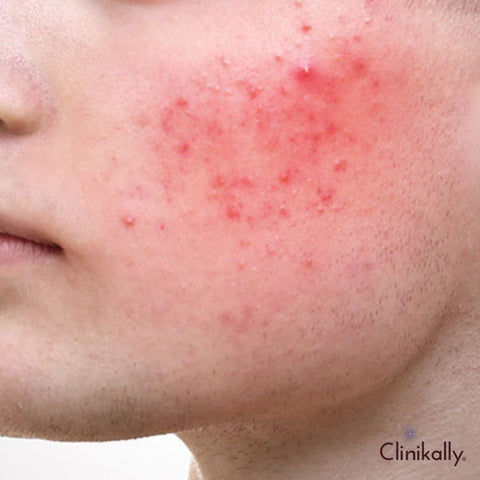
Antibiotic resistance compromises the efficacy of oral antibiotics, leading to treatment failure and disease recurrence.
Resistant bacterial strains may proliferate in the skin microbiota, exacerbating inflammation and perpetuating disease progression.
Clinical Challenges:
-
Limited treatment options: Antibiotic resistance limits the availability of effective treatment options, necessitating alternative therapeutic approaches.
-
Chronicity and relapse: Patients with antibiotic-resistant acne rosacea and pigmentation disorders often experience chronicity and frequent relapses, posing challenges for long-term management.
Strategies for Addressing Antibiotic Resistance:
-
Antimicrobial stewardship: Dermatologists play a pivotal role in promoting responsible antibiotic use, emphasizing appropriate prescribing practices and treatment duration.
-
Combination therapies: Combining oral antibiotics with topical agents, such as benzoyl peroxide or retinoids, can enhance efficacy and reduce the risk of resistance development.
-
Non-antibiotic alternatives: Photodynamic therapy, laser treatments, and botanical extracts offer promising non-antibiotic alternatives for managing acne rosacea and pigmentation disorders.
-
Patient Education and Adherence: Educating patients about antibiotic resistance, its implications, and the importance of adherence to treatment regimens is essential for improving treatment outcomes. Encouraging lifestyle modifications, skincare practices, and adherence to non-antibiotic therapies can mitigate the reliance on antibiotics and reduce the risk of resistance.
-
Research and Development: Continued research is needed to elucidate the mechanisms of antibiotic resistance in acne rosacea and pigmentation disorders.
Development of novel antimicrobial agents, targeted therapies, and vaccines against antibiotic-resistant bacteria holds promise for future treatment strategies.
Managing Side Effects and Risks Associated with Oral Antibiotic Therapy for Acne Rosacea and Pigmentation

Oral antibiotics are commonly prescribed for the treatment of acne rosacea and pigmentation disorders due to their antimicrobial and anti-inflammatory properties. However, like all medications, they carry risks of side effects and adverse reactions. Dermatologists must be vigilant in managing these risks to optimize patient safety and treatment outcomes.
Common Side Effects:
Gastrointestinal disturbances: Oral antibiotics, particularly tetracyclines, can cause nausea, vomiting, diarrhea, and abdominal pain.
Photosensitivity: Some antibiotics, such as tetracyclines and fluoroquinolones, can increase sensitivity to sunlight, leading to sunburns and phototoxic reactions.
Allergic reactions: Patients may develop hypersensitivity reactions, ranging from mild rash to severe anaphylaxis, necessitating immediate medical attention.
Long-term Risks:
Antibiotic resistance: Prolonged use of oral antibiotics can promote the development of antibiotic-resistant bacterial strains, compromising treatment efficacy and future therapeutic options.
Disruption of the microbiome: Antibiotics alter the composition of the skin and gut microbiota, potentially leading to dysbiosis, fungal overgrowth, and secondary infections.
Strategies for Minimizing Risks:
Patient education: Dermatologists should educate patients about the potential side effects and risks associated with oral antibiotic therapy, emphasizing the importance of adherence to treatment regimens and reporting any adverse reactions promptly.
Monitoring: Regular monitoring of patients on oral antibiotics is essential to assess treatment response, monitor for side effects, and detect early signs of antibiotic resistance.
Combination therapy: Combining oral antibiotics with topical agents, such as retinoids or benzoyl peroxide, can enhance efficacy and reduce the duration of antibiotic therapy, minimizing the risk of resistance development.
Treatment duration: Dermatologists should prescribe oral antibiotics for the shortest effective duration to minimize the risk of side effects and antibiotic resistance while achieving optimal treatment outcomes.
Alternative Therapeutic Options:
Non-antibiotic therapies: Photodynamic therapy, laser treatments, chemical peels, and botanical extracts offer non-antibiotic alternatives for managing acne rosacea and pigmentation disorders, reducing the reliance on oral antibiotics.
Lifestyle modifications: Encouraging patients to adopt healthy skincare practices, dietary modifications, and stress management techniques can complement treatment and reduce the need for long-term antibiotic therapy.
Shared Decision-making:
Dermatologists should engage patients in shared decision-making, discussing the risks, benefits, and alternatives to oral antibiotic therapy to ensure informed treatment decisions aligned with patient preferences and values.
Comparative Analysis of Oral Antibiotics VS Topical Treatments in the Management of Acne Rosacea and Pigmentation

Acne rosacea and pigmentation disorders present therapeutic challenges, often necessitating the use of both oral and topical treatments. Understanding the comparative efficacy, safety, and considerations of oral antibiotics versus topical treatments is crucial for dermatologists in developing optimal treatment plans tailored to individual patient needs.
Efficacy:
-
Oral antibiotics: Oral antibiotics, such as tetracyclines and macrolides, offer systemic anti-inflammatory and antimicrobial effects, effectively reducing inflammatory lesions, erythema, and pigmentation irregularities associated with acne rosacea and pigmentation disorders.
-
Topical treatments: Topical treatments, including retinoids, benzoyl peroxide, azelaic acid, and topical antibiotics (e.g., clindamycin, erythromycin), target localized inflammation and bacterial proliferation, providing targeted therapy with fewer systemic effects.
Safety Profile:
-
Oral antibiotics: Long-term use of oral antibiotics is associated with systemic side effects, including gastrointestinal disturbances, photosensitivity, and the development of antibiotic resistance. Monitoring for adverse effects and antibiotic resistance is essential.
-
Topical treatments: Topical treatments are generally well-tolerated, with localized side effects such as skin irritation, dryness, and erythema. Adverse effects are typically milder compared to oral antibiotics, minimizing systemic risks.
Compliance and Adherence:
-
Oral antibiotics: Compliance with oral antibiotic therapy may be challenging due to the need for daily dosing, potential side effects, and concerns about antibiotic resistance. Patient education and regular follow-up are essential to ensure adherence.
-
Topical treatments: Topical treatments offer convenience and ease of use, promoting better adherence among patients. However, application frequency and skin irritation may affect compliance in some individuals.
Antibiotic Resistance:
-
Oral antibiotics: Prolonged use of oral antibiotics contributes to the development of antibiotic-resistant bacterial strains, limiting treatment options and compromising long-term efficacy. Strategies to mitigate antibiotic resistance include combination therapy and antibiotic stewardship.
-
Topical treatments: Topical antibiotics can also contribute to antibiotic resistance, albeit to a lesser extent compared to oral antibiotics. Rotation of topical agents, combination therapy, and judicious use are essential to minimize resistance development.
Individualization of Treatment:
Treatment selection should be individualized based on disease severity, patient preferences, tolerability, and the presence of comorbidities.
Mild to moderate cases may benefit from initial treatment with topical agents, reserving oral antibiotics for more severe or refractory cases.
Combination therapy, incorporating both oral and topical treatments, may be warranted in certain cases to optimize efficacy while minimizing side effects and antibiotic resistance.
Clinical Guidelines and Expert Recommendations for Navigating Oral Antibiotic Therapy in Acne Rosacea and Pigmentation
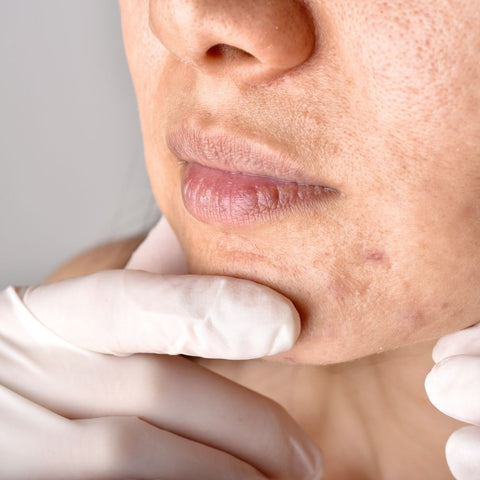
Oral antibiotic therapy remains a cornerstone in the management of acne rosacea and pigmentation disorders, but its optimal use requires adherence to clinical guidelines and expert recommendations. Dermatologists must navigate treatment decisions judiciously to maximize efficacy while minimizing risks associated with antibiotic therapy.
Guideline Overview:
Clinical guidelines provide evidence-based recommendations for the use of oral antibiotics in acne rosacea and pigmentation disorders, emphasizing the importance of appropriate patient selection, dosing regimens, and monitoring protocols.
Guidelines typically recommend oral antibiotics as first-line therapy for moderate to severe cases of acne rosacea and pigmentation disorders, particularly when topical treatments have proven ineffective or impractical.
Patient Selection and Evaluation:
Patient selection is critical in determining the suitability of oral antibiotic therapy, considering factors such as disease severity, presence of comorbidities, medication history, and risk of antibiotic resistance.
Dermatologists should conduct a comprehensive evaluation of each patient, including a thorough medical history, physical examination, assessment of disease severity, and consideration of psychosocial factors.
Optimal Antibiotic Selection:
The choice of oral antibiotic should be guided by factors such as antimicrobial efficacy, anti-inflammatory properties, safety profile, and resistance patterns.
Tetracyclines (e.g., doxycycline, minocycline) are often preferred due to their broad-spectrum antimicrobial activity, anti-inflammatory effects, and favorable safety profile. Macrolides (e.g., erythromycin) may be considered as alternative agents in cases of intolerance or contraindications to tetracyclines.
Treatment Duration and Monitoring:
Oral antibiotic therapy should be prescribed for the shortest effective duration to minimize the risk of side effects, antibiotic resistance, and relapse.
Regular monitoring is essential to assess treatment response, monitor for side effects, and detect early signs of antibiotic resistance. Patients should be followed up at regular intervals to evaluate efficacy, adjust treatment as needed, and promote adherence.
Combination Therapy and Sequential Treatment:
Combination therapy, incorporating oral antibiotics with topical agents (e.g., retinoids, benzoyl peroxide), may enhance efficacy and reduce the duration of antibiotic therapy, minimizing the risk of resistance development.
Sequential treatment strategies, such as intermittent dosing or pulse therapy, may be considered to further mitigate the risk of antibiotic resistance while maintaining therapeutic efficacy.
Antibiotic Stewardship and Patient Education:
Dermatologists play a crucial role in promoting antibiotic stewardship by advocating for responsible antibiotic use, emphasizing the importance of adherence to treatment regimens, and educating patients about the risks of antibiotic resistance.
Patient education should encompass proper medication use, adherence to treatment regimens, recognition of potential side effects, and the importance of regular follow-up appointments.
Dermatologist Perspectives: Integrating Oral Antibiotics into Effective Skincare Regimens for Acne Rosacea and Pigmentation

Dermatologists play a pivotal role in designing comprehensive skincare regimens for patients with acne rosacea and pigmentation disorders. Integrating oral antibiotics into these regimens requires a nuanced approach that considers disease severity, patient preferences, and the risk of antibiotic resistance. Dermatologists' perspectives provide valuable insights into optimizing the efficacy and safety of oral antibiotic therapy within skincare protocols.
Assessing Disease Severity and Treatment Goals:
Dermatologists begin by assessing the severity of acne rosacea or pigmentation disorders, considering factors such as lesion type, extent of involvement, and impact on quality of life.
Treatment goals, including reduction of inflammatory lesions, improvement in erythema and pigmentation, and prevention of disease progression, guide the selection and integration of oral antibiotics into skincare regimens.
Individualized Treatment Planning:
Dermatologists recognize the importance of individualizing treatment plans based on patient characteristics, preferences, and treatment history.
Oral antibiotics are integrated into skincare regimens based on patient-specific factors, such as age, gender, comorbidities, medication tolerance, and lifestyle considerations.
Combination Therapy Approach:
Dermatologists often adopt a combination therapy approach, incorporating oral antibiotics with topical agents (e.g., retinoids, benzoyl peroxide, azelaic acid) to target multiple pathogenic factors contributing to acne rosacea and pigmentation disorders.
Combination therapy enhances efficacy, reduces the duration of antibiotic therapy, and minimizes the risk of antibiotic resistance.
Treatment Duration and Monitoring:
Dermatologists prescribe oral antibiotics for the shortest effective duration necessary to achieve treatment goals, minimizing the risk of side effects and antibiotic resistance.
Regular monitoring is essential to assess treatment response, monitor for side effects, and detect early signs of antibiotic resistance. Adjustments to treatment plans are made based on individual patient response and tolerability.
Antibiotic Stewardship and Patient Education:
Dermatologists advocate for antibiotic stewardship by promoting responsible antibiotic use, educating patients about the risks of antibiotic resistance, and emphasizing adherence to treatment regimens.
Patient education focuses on proper medication use, skincare practices, recognition of potential side effects, and the importance of regular follow-up appointments for optimal treatment outcomes.
Shared Decision-making and Long-term Management:
Dermatologists engage patients in shared decision-making, discussing treatment options, expectations, and potential risks and benefits.
Long-term management plans consider the chronic nature of acne rosacea and pigmentation disorders, emphasizing lifestyle modifications, maintenance therapy, and alternative treatment modalities to minimize reliance on oral antibiotics.
Strategies for Optimizing Treatment Outcomes with Oral Antibiotics in Acne Rosacea and Pigmentation Management
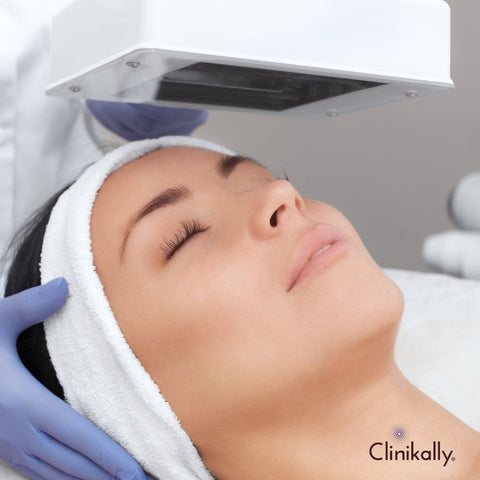
Effective management of acne rosacea and pigmentation disorders often involves the use of oral antibiotics. Optimizing treatment outcomes with oral antibiotics requires a comprehensive approach that addresses efficacy, safety, compliance, and antibiotic resistance. Dermatologists employ various strategies to maximize the benefits of oral antibiotic therapy while minimizing potential risks.
Tailored Treatment Plans:
Dermatologists develop individualized treatment plans based on the specific characteristics of each patient, including disease severity, skin type, medical history, and treatment preferences.
Tailoring treatment plans ensures that patients receive personalized care and optimizes the likelihood of treatment success.
Combination Therapy:
Combining oral antibiotics with topical treatments, such as retinoids, benzoyl peroxide, or azelaic acid, enhances efficacy and reduces the risk of antibiotic resistance.
Combination therapy targets multiple aspects of acne rosacea and pigmentation disorders, including inflammation, bacterial proliferation, and hyperpigmentation, leading to improved treatment outcomes.
Short-term Use and Intermittent Therapy:
Prescribing oral antibiotics for short-term use or implementing intermittent therapy regimens helps minimize the risk of antibiotic resistance and adverse effects associated with prolonged use.
Short-term courses of oral antibiotics may be sufficient to achieve initial control of symptoms, followed by maintenance therapy with topical agents or non-antibiotic alternatives.
Monitoring and Follow-up:
Regular monitoring and follow-up appointments allow dermatologists to assess treatment response, monitor for side effects, and adjust treatment regimens as needed.
Close monitoring facilitates early detection of antibiotic resistance and ensures timely intervention to optimize treatment outcomes.
Patient Education and Adherence:
Educating patients about the importance of adherence to treatment regimens, proper medication use, and potential side effects fosters collaboration and empowers patients to actively participate in their care.
Providing clear instructions, educational materials, and ongoing support promotes adherence and enhances treatment outcomes
Antibiotic Stewardship:
Dermatologists promote antibiotic stewardship by advocating for responsible antibiotic use, adhering to clinical guidelines, and minimizing unnecessary antibiotic prescriptions.
Antibiotic stewardship efforts aim to preserve the effectiveness of antibiotics, reduce the development of antibiotic resistance, and optimize treatment outcomes for patients with acne rosacea and pigmentation disorders.
Alternative Therapeutic Modalities:
Exploring alternative therapeutic modalities, such as photodynamic therapy, laser treatments, chemical peels, and botanical extracts, offers additional options for managing acne rosacea and pigmentation disorders.
Integrating non-antibiotic therapies into treatment regimens reduces reliance on oral antibiotics and provides alternative strategies for patients who are unable to tolerate or prefer to avoid antibiotic therapy.
Collaborative Decision-making:
Engaging patients in collaborative decision-making fosters open communication, ensures that treatment plans align with patient preferences and goals, and enhances overall satisfaction with care.
Collaborative decision-making empowers patients to actively participate in their treatment and facilitates shared responsibility for achieving optimal treatment outcomes.
Patient Experiences and Perspectives on Oral Antibiotic Treatment for Acne Rosacea and Pigmentation
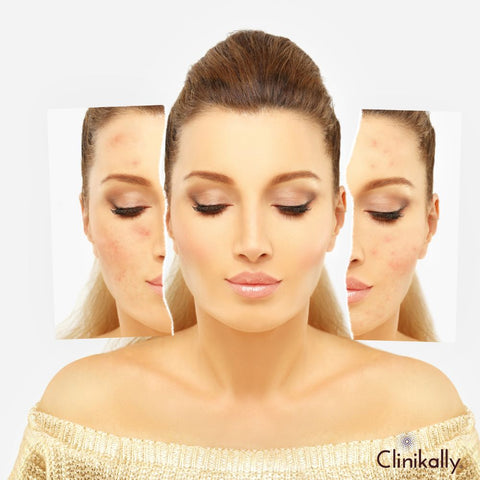
Understanding patient experiences and perspectives is essential for optimizing the effectiveness and acceptance of oral antibiotic treatment for acne rosacea and pigmentation. Patient insights provide valuable feedback on treatment efficacy, side effects, adherence challenges, and overall satisfaction with therapy. By considering patient experiences and perspectives, dermatologists can tailor treatment plans to meet individual needs and improve treatment outcomes.
Initial Expectations and Hopes:
Patients often seek oral antibiotic treatment for acne rosacea and pigmentation with the expectation of improving their skin's appearance, reducing inflammation, and restoring confidence.
Hopes for clear skin and improved self-esteem drive patients to pursue oral antibiotic therapy as part of their skincare regimen.
Perceived Effectiveness:
Patient experiences with oral antibiotics vary widely, with some individuals reporting significant improvements in acne rosacea and pigmentation symptoms, while others may experience limited or inconsistent results.
Perceived effectiveness is influenced by factors such as disease severity, treatment duration, adherence to therapy, and individual response to medication.
Challenges and Side Effects:
Patients may encounter challenges and side effects associated with oral antibiotic treatment, including gastrointestinal upset, photosensitivity, dry skin, and yeast infections.
Side effects can impact treatment adherence, quality of life, and overall satisfaction with therapy, prompting patients to seek alternative treatments or discontinue oral antibiotics altogether.
Adherence and Compliance:
Adherence to oral antibiotic therapy can be challenging for some patients due to the need for daily dosing, medication side effects, and perceived lack of improvement in symptoms.
Patients may struggle to maintain adherence over time, leading to suboptimal treatment outcomes and frustration with the perceived ineffectiveness of therapy.
Psychological Impact:
The psychological impact of acne rosacea and pigmentation can be profound, affecting self-esteem, body image, and social interactions.
Patients may experience feelings of embarrassment, self-consciousness, and frustration related to their skin condition, influencing their perceptions of oral antibiotic treatment and treatment adherence.
Desire for Alternative Therapies:
Some patients express a preference for alternative therapies, such as topical treatments, natural remedies, or lifestyle modifications, to manage acne rosacea and pigmentation without relying on oral antibiotics.
Desire for alternative therapies may stem from concerns about antibiotic resistance, side effects, or a desire for more holistic approaches to skincare.
Communication and Shared Decision-making:
Open communication and shared decision-making between patients and dermatologists are essential for addressing patient concerns, discussing treatment options, and collaboratively developing treatment plans.
Patient-centered care that considers individual preferences, goals, and experiences fosters trust, engagement, and satisfaction with oral antibiotic treatment.
Concluding Insights: Leveraging the Potential of Oral Antibiotics in the Management of Acne Rosacea and Pigmentation
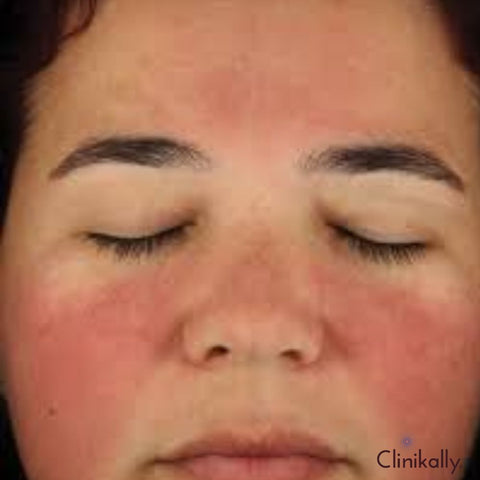
Oral antibiotics represent valuable tools in the multifaceted approach to managing acne rosacea and pigmentation disorders. Despite their efficacy in reducing inflammation and controlling bacterial proliferation, dermatologists must navigate challenges such as antibiotic resistance, side effects, and patient adherence. By leveraging the potential of oral antibiotics judiciously and in conjunction with other treatment modalities, dermatologists can optimize outcomes for patients with these dermatological conditions.
Comprehensive Treatment Approaches:
Effective management of acne rosacea and pigmentation disorders requires a comprehensive approach that addresses both the inflammatory and microbial components of the conditions.
Oral antibiotics play a crucial role in targeting bacterial overgrowth and modulating inflammatory pathways, complementing the action of topical agents and non-antibiotic therapies.
Considerations for Antibiotic Stewardship:
Antibiotic stewardship is paramount in preserving the effectiveness of oral antibiotics and minimizing the development of antibiotic resistance.
Dermatologists must adhere to evidence-based guidelines, prescribe antibiotics judiciously, and educate patients about the risks of antibiotic resistance and the importance of adherence to treatment regimens.
Integration with Alternative Therapies:
Integration of oral antibiotics with alternative therapeutic modalities, such as photodynamic therapy, laser treatments, and botanical extracts, offers additional options for managing acne rosacea and pigmentation disorders.
Combining therapies allows for synergistic effects, reduces reliance on antibiotics, and provides tailored treatment options for patients with varying needs and preferences.
Patient-Centered Care:
Patient experiences and perspectives on oral antibiotic treatment are integral to optimizing outcomes and promoting patient satisfaction.
Dermatologists should engage patients in shared decision-making, provide clear explanations of treatment options and potential side effects, and address patient concerns to enhance treatment adherence and success.
Ongoing Research and Innovation:
Continued research and innovation in dermatology are essential for advancing treatment options and addressing emerging challenges associated with oral antibiotic therapy.
Research efforts should focus on developing novel therapies, improving antibiotic stewardship practices, and identifying alternative strategies to minimize reliance on antibiotics.
Conclusion:
In conclusion, oral antibiotics remain valuable therapeutic options in the management of acne rosacea and pigmentation disorders when used judiciously and in conjunction with comprehensive treatment approaches.
By leveraging the potential of oral antibiotics in a patient-centered and evidence-based manner, dermatologists can achieve optimal outcomes and improve the quality of life for patients affected by these dermatological conditions.
Conclusion

In conclusion, oral antibiotics play a significant role in managing acne rosacea and pigmentation disorders, offering antimicrobial and anti-inflammatory benefits. However, their use is not without challenges, including antibiotic resistance, side effects, and the need for careful management. Dermatologists must navigate these challenges by adhering to clinical guidelines, promoting antibiotic stewardship, and integrating oral antibiotics into comprehensive treatment regimens tailored to individual patient needs. By prioritizing patient safety, employing combination therapy approaches, and fostering patient education and adherence, dermatologists can optimize treatment outcomes and improve the quality of life for patients with these dermatological conditions.









































